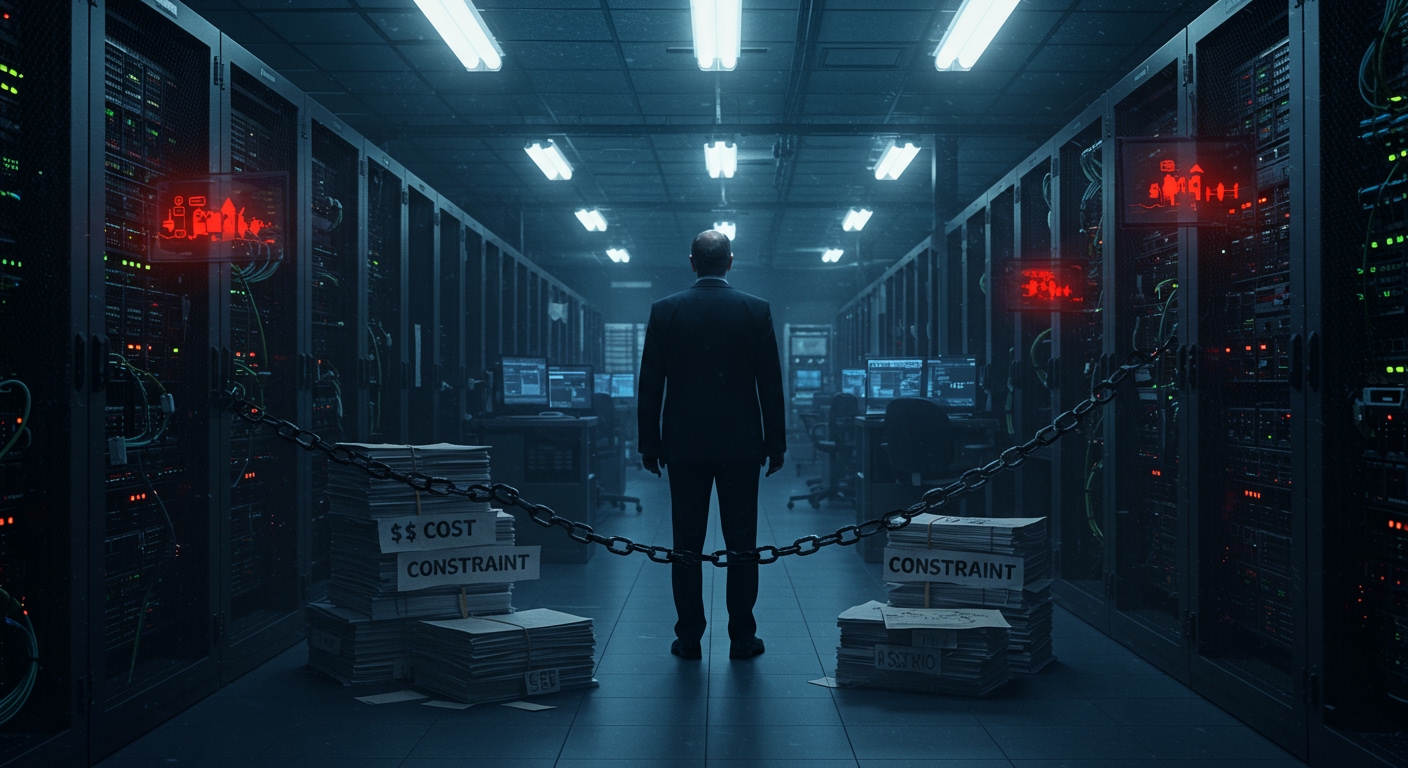Washington, D.C. — State and local government officials across the United States are grappling with significant challenges in their technology infrastructure, primarily driven by pressing financial constraints and escalating cybersecurity threats, according to a comprehensive new survey.
The findings, published last week by the global professional services firm Ernst & Young, shed light on the critical priorities and obstacles facing those responsible for allocating IT resources within state and local agencies. The survey polled 300 such officials, providing a revealing snapshot of the current landscape.
Financial Pressures Dominate Concerns
The survey results underscore the pervasive influence of financial considerations on government technology decisions. Reducing costs emerged as a top priority for officials polled, reflecting broader budgetary pressures and the need to maximize value from public funds.
This focus on cost control is intrinsically linked to another significant challenge: the modernization of aging IT systems. While updating old systems is recognized as a key concern and a necessity for improved efficiency and service delivery, it is perceived as prohibitively expensive by a large majority of respondents. According to the survey, 70% of those polled believe such essential modernization efforts are simply too costly given their current financial realities.
Beyond direct modernization costs, financial concerns extend to worries about the long-term viability of their agencies’ technological capabilities. A notable 61% of officials expressed concern that their agencies could become obsolete without greater collaboration with the private sector to leverage new technologies and expertise. This highlights a recognition that government IT cannot evolve in isolation.
However, the path to private sector partnership is fraught with difficulty. Roughly the same percentage of officials who desire collaboration also find it exceedingly challenging. They cite various “barriers” that impede effective partnerships, suggesting that structural or procedural hurdles may be preventing agencies from accessing the very private sector innovation they believe is necessary for survival.
The financial landscape is further complicated by external factors. Leaders surveyed expressed significant concern regarding the impact of budget shortfalls and potential federal funding cuts on their IT spending plans. This external fiscal uncertainty adds another layer of complexity to strategic planning and resource allocation in the technology domain.
Cybersecurity: A Persistent and Elevated Threat
Alongside financial management, improving cybersecurity ranked as the other top concern among the 300 state and local government officials surveyed by Ernst & Young. In an era of increasingly sophisticated cyberattacks targeting public infrastructure and sensitive citizen data, securing digital assets has become paramount.
While the survey summary did not elaborate on specific cybersecurity threats or strategies, its ranking among the top two priorities underscores the critical nature of this challenge. Government agencies are attractive targets for malicious actors, making robust defense mechanisms, proactive threat intelligence, and resilient recovery plans essential components of any IT strategy.
Modernization Roadblocks and Collaboration Hurdles
The interconnected challenges of financing and modernization create a significant hurdle for agencies. The 70% figure indicating that modernization is seen as too costly reveals a potential impasse: agencies know they need to update outdated infrastructure but feel financially unable to do so. This can lead to decreased efficiency, increased security vulnerabilities, and an inability to adopt newer, more capable technologies.
The paradox surrounding private sector collaboration is equally telling. While 61% see it as crucial to avoiding obsolescence, roughly 61% also find it too difficult due to cited “barriers.” Identifying and dismantling these barriers — whether they are procurement processes, contractual complexities, cultural differences, or something else — appears vital for agencies to access the innovation they believe they need.
Pathways Forward: Training, Resources, and AI
Despite the significant challenges, the survey hints at potential pathways forward. Officials noted that increased training and resources for new technologies could be helpful tools in navigating the complex IT landscape. Equipping staff with the skills necessary to manage and utilize modern systems is crucial for successful implementation and operation.
Furthermore, officials reiterated that effectively working with the private sector, despite the current difficulties, holds potential for addressing some of the financial and modernization challenges. Finding ways to streamline partnerships and overcome existing “barriers” could unlock access to expertise, innovative solutions, and potentially more cost-effective approaches than purely internal development.
Looking ahead, artificial intelligence remains in good favor among government IT leaders. The survey found that 45% of those polled believe generative artificial intelligence tools will be a top technology used in their organizations in the future. This suggests a willingness to explore emerging technologies, even amidst budget constraints and foundational infrastructure challenges, indicating a forward-looking perspective on how AI might eventually contribute to efficiency and service delivery.
Conclusion
The Ernst & Young survey paints a clear picture of the strategic landscape for state and local government IT. Financial pressures, driven by the high cost of modernization, budget shortfalls, and funding uncertainty, are the most pressing concern, closely followed by the imperative of strengthening cybersecurity defenses. While officials recognize the need for private sector collaboration to avoid technological obsolescence, significant hurdles currently impede such partnerships. Addressing these financial, security, and collaborative challenges will be critical for state and local governments as they strive to provide effective and secure digital services to their constituents in an increasingly complex world. The cautious optimism surrounding the potential of generative AI offers a glimpse into future technological considerations, but the immediate focus remains firmly fixed on managing costs and securing systems.





